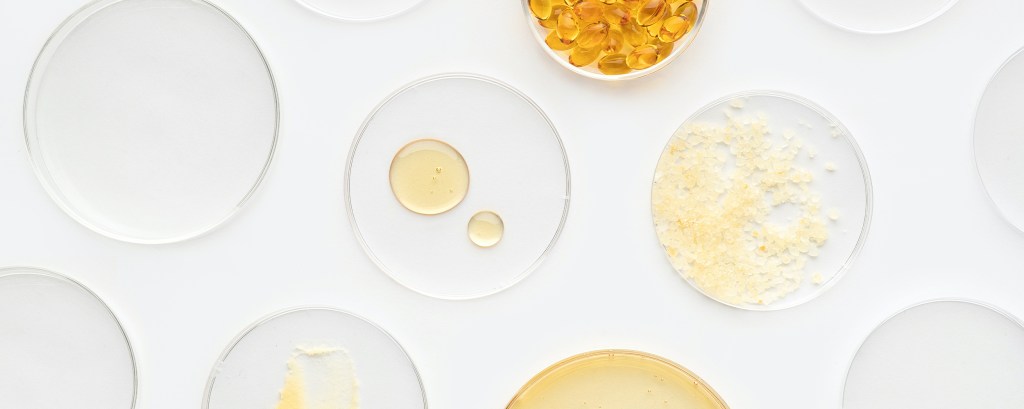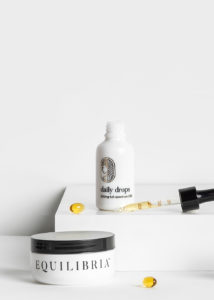What Are Terpenes? Everything You Need To Know

With terms such as “CBD” and “THC” becoming mainstream, you may have also heard the word “terpene” thrown around but have not known exactly what it was—or thought that this was deep-into-the-culture cannabis user lingo. That’s not the case! Terpenes are easy to understand and may add potential therapeutic benefits to your CBD experience (the research is still ongoing).
What are Terpenes?
Terpenes don’t just exist in cannabis plants, they are naturally occurring substances in many plants and are responsible for the fragrance, taste, and pigment of plants and are often isolated for use in essential oils and aromatherapy. (Sahu 2013) There seems to be some evidence that terpenes can influence various therapeutic properties of THCa and CBDa within different strains of cannabis plants. Per a 2019 study, “the correlation in a particular strain between THCA or CBDA and a certain set of terpenoids, and the partial specificity in interaction may have influenced the cultivation of cannabis and may have implications for therapeutic treatments.” (Namdar 2019)
One problem, so far, is that we don’t fully understand quite how cannabinoid terpenes work on humans. A study from March 2020 concluded that terpenes may work, but they don’t work how the industry assumed—via the entourage effect (cannabinoids and terpenes working together) with CBD and THC. Terpenoids don’t work directly on CB1 or CB2 receptors like the cannabinoids CBD or THC. A recent paper published fairly recently also called for a more scientific review of terpenes in cannabis and the therapeutic benefits that are happening. (Booth 2019)
 Cannabinoids and Terpenes
Cannabinoids and Terpenes
Let’s do a quick review here: How do cannabis and CBD actually work? Within our body, we have an endocannabinoid system, which is quite similar to the endorphin system (endorphins are chemicals produced by the body to relieve stress and pain). The endocannabinoid system is very, very old (evolutionarily speaking) and sits within our central nervous system, but also has many different receptors within all of our major organ systems that send and receive signals with a variety of effects—helping to boost hunger, effects on sleep and sex drive, modulating discomfort, and emotions.
The most abundant of these receptors are CB1, located in our central nervous system, and CB2 which is located everywhere else throughout our body. We make our own cannabinoids that act on these receptors, but it seems like our body may also like and perhaps need phytocannabinoids (those from plants) like CBD and THC to help keep these vital functions running smoothly and to make life enjoyable. Phytocannabinoids in cannabis, like THC, CBD, CBN (and 141 others!), act on CB1 and CB2 receptors. In fact, the different cannabinoids compete for these receptors and this, in turn, can make the cannabinoids work better. This is called the entourage effect which I alluded to earlier.
Despite not knowing the exact mechanism of how terpenes work or affect us, that doesn’t mean there aren’t any therapeutic effects.
Since terpenes also exist in other plants, we can take what we know so far and apply it to the cannabis world – for example, lavender helps to relax us.* This theory transferred over to the cannabis world is what makes scientists and clinicians wonder if there is something more to the terpenes in cannabis.
There’s a wide variety of terpenes that could provide various therapeutic effects that I have listed below. If you choose to use CBD or cannabis strains like Sativa or Indica (THC cannabis), then terpenes are one factor to be aware of in that their presence within specific strains may help with specific therapeutic goals.
Myrcene
Found in: Lemon Grass, Hops, Mango, Thyme
Effects: Calming, May Help With Discomfort and Sleep*
Other Features: Possesses Anti-Fungal, Antibacterial Properties (Sahu 2013)*
Pinene
Found in: Pine Needles, Rosemary, Basil, Dill
Effects: May Help With Discomfort and Overwhelm*
B-Caryophyllene
Found in: Black Pepper, Cloves, Cinnamon.
Effects: Soothing Discomfort and Tenderness*
Limonene
Found in: Citrus Fruit Rinds, Rosemary, Juniper, Peppermint
Effects: Provide Stress Relief*
Other Features: Limonene Enhances the Properties of Other Terpenes*
Terpinolene
Found in: Nutmeg, Tea, Cumin, Lilacs
Effects: Up-Lifting Effects on Mood*
Humulene
Found in: Hops, Sage, Ginseng, Coriander
Effects: Anti-bacterial and Possibly Soothing Swelling*
Ocimene
Found in: Mint, Parsley
Effects: Anti-fungal and Reducing Tenderness*
Bisabolol
Found in: Chamomile
Effects: Shown to Have Reduced Swelling in Mice*
Linalool
Found in: Lavender
Effects: Stress-Relieving and Mood-Boosting*
 One of the reasons why I love Equilibria products is that they conduct third-party testing on all of their products. This means that customers can be sure that they are getting exactly what they want and no other substances. One important factor that third-party testing looks at is terpene profiles.
One of the reasons why I love Equilibria products is that they conduct third-party testing on all of their products. This means that customers can be sure that they are getting exactly what they want and no other substances. One important factor that third-party testing looks at is terpene profiles.
Equilibria’s Daily Drops are high in B-Caryophyllene and Bisabolol, both of which have shown to also have antimicrobial properties in animal studies.* The Softgels are high in B-Caryophyllene, Pinene, Humulene, and Myrcene, while the Relief Balm is high in Linalool. These terpenes remain in Equilibria products because the products are full-spectrum which means you are getting all of the goodness from the plant.
Terpenes are becoming so popular that companies that were extracting terpenes out of their products are starting to artificially add them back in. While this might seem like a good idea, data is accumulating that re-added terpenes can cause various unpleasant—and sometimes dangerous—side effects. Re-added terpenes can be dangerous in products like dabs, shatter, and the many vaping THC products sold at gas stations and vape shops. It is much safer to obtain THC products from an accredited dispensary and CBD products, such as those mentioned above from Equilibria, that have no artificially added terpenes. And if you use THC cannabis, whole-plant cannabis is always your best bet to get a plant loaded with terpenes and cannabinoids for the greatest desired therapeutic effect. If all else fails, a message to your friendly cannabis nurse always helps set you on the right track!
About Rebecca Abraham:
 Educating ourselves about CBD and the products we put in our bodies can feel overwhelming at times. That’s why Acute on Chronic and Equilibria are working hard to keep it simple and straightforward.
Educating ourselves about CBD and the products we put in our bodies can feel overwhelming at times. That’s why Acute on Chronic and Equilibria are working hard to keep it simple and straightforward.
Acute on Chronic founder and President, Rebecca Abraham BSN, RN, is a certified cannabis nurse. From a single assessment to ongoing support, Acute on Chronic provides support for all your cannabis questions as you investigate and become comfortable with it as alternative care. Follow Rebecca onFacebook, Twitter, and LinkedIn and reach out for an initial consultation.
Sources:
Booth, J. K., & Bohlmann, J. (2019). Terpenes in Cannabis sativa–From plant genome to humans. Plant Science, 284, 67-72.
Namdar, D., Voet, H., Ajjampura, V., Nadarajan, S., Mayzlish-Gati, E., Mazuz, M., … & Koltai, H. (2019). Terpenoids and phytocannabinoids co-produced in Cannabis sativa strains show specific interaction for cell cytotoxic activity. Molecules, 24(17), 3031.
Rocha, N. F. M., Rios, E. R. V., Carvalho, A. M. R., Cerqueira, G. S., de Araújo Lopes, A., Leal, L. K. A. M., … & de Sousa, F. C. F. (2011). Anti-nociceptive and anti-inflammatory activities of (−)-α-bisabolol in rodents. Naunyn-Schmiedeberg’s archives of pharmacology, 384(6), 525-533.
Sahu, P. K., Giri, D. D., Singh, R., Pandey, P., Gupta, S., Shrivastava, A. K., … & Pandey, K. D. (2013). Therapeutic and medicinal uses of Aloe vera: a review. Pharmacology & Pharmacy, 4(08), 599.
Woelk, H., & Schläfke, S. (2010). A multi-center, double-blind, randomized study of the Lavender oil preparation Silexan in comparison to Lorazepam for generalized anxiety disorder. Phytomedicine, 17(2), 94-99.